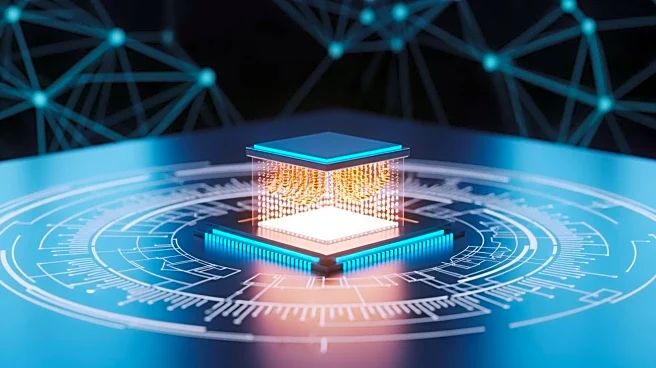What's Happening?
A novel Adaptive Transformer-Based Quantum Intrusion Detection System (ATQ-IDS) has been developed to improve security in Software Defined Networks (SDN). This system utilizes advanced machine learning techniques, including quantum-inspired feature selection
and temporal-spatial transformer networks, to detect and respond to cyber threats such as DDoS attacks, brute force attempts, and port scanning. The system was tested using the CICIDS 2019 dataset, which simulates real-world attack scenarios. The ATQ-IDS demonstrated superior performance in terms of accuracy, precision, recall, and detection time compared to existing models like Random Forest, Support Vector Machines, and Convolutional Neural Networks. The system's architecture allows for real-time adaptability and scalability across distributed SDN environments, making it suitable for latency-sensitive network infrastructures.
Why It's Important?
The development of the ATQ-IDS is significant for enhancing cybersecurity in SDN environments, which are increasingly used in modern network architectures. By improving the detection and response capabilities to cyber threats, this system can help prevent data breaches and minimize the impact of attacks on critical infrastructure. The use of quantum-inspired techniques and federated learning ensures that the system can adapt to evolving attack patterns while maintaining high detection accuracy and privacy. This advancement is crucial for industries relying on SDN for efficient network management, as it provides a robust solution to safeguard against sophisticated cyber threats.
What's Next?
The deployment of ATQ-IDS in real-world SDN environments is expected to follow, with further testing and optimization to ensure its effectiveness in diverse network scenarios. Stakeholders, including network administrators and cybersecurity experts, may explore integrating this system into existing security frameworks to enhance protection measures. Additionally, ongoing research and development could focus on refining the system's algorithms and expanding its capabilities to address emerging threats. Collaboration with industry partners and academic institutions may also drive innovation and adoption of this technology.
Beyond the Headlines
The introduction of quantum-inspired techniques in intrusion detection systems represents a shift towards more advanced and efficient cybersecurity solutions. This development could lead to broader applications of quantum computing in network security, potentially transforming how threats are detected and mitigated. Ethical considerations regarding data privacy and the use of machine learning in security systems may also arise, prompting discussions on regulatory frameworks and best practices for implementation.
















